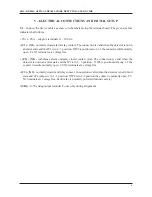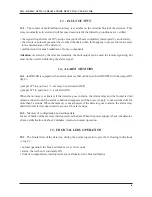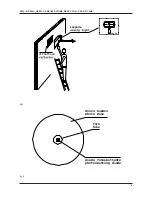
15
EDS - RK90R - OPTICAL BEAM SMOKE DETECTOR - USER GUIDE
9 - SETTING OF TURBULENCE CIRCUIT
9.1 -
The RK90R detector is equipped with a special additional circuit for the detection of air Turbulence
(heat).
This circuit is independent from the classic obscuration one and in particular situations it can be used
to increase the performance of the detector. If these particular situations are not present the Turbulence
circuit can be left unused.
9.2
- This circuit is particularly useful when, for environmental reasons, the optical beam smoke
detector must be installed at distances from the ceiling higher than the nominal.
When the fire begins, it produces smoke clouds and hot air bubbles that go up.
When these bubbles intercept the infrared beam they perturbate it because they produce a change of
the optical-physical characteristics of infrared beam.
These changes are obviuslycorrelated in time.
This circuit is been projected to detect these changes and, when these changes reach the programmed
width and time lenght, an alarm signal is generated.
The advantage of this circuit is the quicker fire detection, because the fire is detected in its beginning
phase.
A typical example is the complete protection of the dome of a church with important pictures on its
surface.
The optical beam smoke detectors must be installed at the baseline of the dome and therefore much
lower than the ceiling.
In this case using the turbulence (heat) detection circuit is very useful to improve the detection.
9.3
- selection of the sensitivity level of the circuit sensitive to Turbulence(heat).
The operation is performed acting on selector SW1 of the detector that has 4 positions (fig.9).
• sensitivity increases from 1 to 4
• position 1 : minimum sensitivity
• position 4 : maximum sensitivity
The regulation must be performed with caution, because with an higher sensitivity a quicker response
time is obtained, but also the probability of false alarm is increased.
So the sensitivity selection must be done according to the environmental conditions.
If these conditions are good, an high sensitivity regulation is possible.
If in the environment, because of the normal working conditions, dust's clouds, vapor or smoke are
systematically produced, it will be necessary to adjust the sensitivity to a lower level, so that these
factors doesn't generate false alarms.
















































